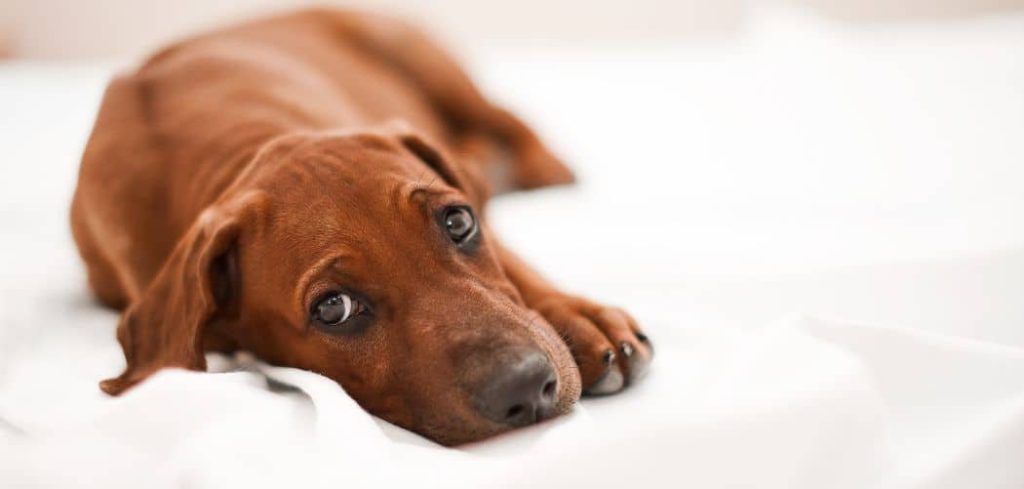A splenectomy—surgical removal of the spleen—is a major operation for any dog. After the procedure, many pet parents notice changes in behavior, including increased thirst. While some water intake is expected during recovery, excessive drinking may be a sign that something’s wrong.
We outline the common causes of dog drinking a lot of water after splenectomy, what you can do at home, and when to seek veterinary help.
Dog Drinking a Lot of Water After Splenectomy — Why It Happens
Dogs may drink more water after splenectomy due to anesthesia, medication side effects, blood loss, infection risk, or stress. While mild thirst is normal in the first 24–48 hours, excessive or prolonged thirst could point to complications like internal bleeding, fever, or organ dysfunction.

Common Causes of Dog Drinking a Lot of Water After Splenectomy
Anesthesia and Surgical Recovery
Anesthesia used during surgery can dehydrate your dog and disrupt their normal fluid balance.
Post-operatively, they may drink more as their body flushes out the remaining drugs and rebalances hydration.
This effect is typically short-lived, and thirst usually subsides within a day or two after surgery.
Pain Medications and Steroids
Dogs recovering from a splenectomy are often prescribed medications like opioids or corticosteroids.
These drugs can increase thirst as a side effect, especially steroids like prednisone, which also increase urination.
If your dog’s thirst seems excessive, ask your vet whether an adjustment in medication is appropriate.
Blood Loss and Fluid Replacement
The spleen plays a critical role in blood storage, and its removal often involves managing blood loss.
Dogs may experience a drop in blood pressure or need fluid therapy during surgery, leading to a post-op increase in thirst as their body compensates.
Continued excessive thirst could be a sign of ongoing internal bleeding or shock—both of which require immediate medical attention.
Infection or Inflammatory Response
A splenectomy weakens your dog’s ability to fight off certain infections temporarily.
If a post-op infection develops, your dog may experience fever, increased thirst, lethargy, and loss of appetite.
Watch for signs like incision redness, heat, discharge, or unusual behavior. Early treatment with antibiotics can prevent complications.
Read more: Dog Drinking a Lot of Water and Surgery (Here’s why)
Stress or Discomfort During Recovery
Post-operative stress from hospitalization, confinement, or pain can lead to behavioral changes like excessive drinking.
Panting, pacing, and restlessness may also be present.
Creating a calm, low-stress environment supports better recovery and helps reduce unnecessary thirst behaviors.
Related: Dog drinking a lot of water and not eating (Here’s why)
What to Do If Your Dog Is Drinking a Lot After Splenectomy
Closely monitor how much water your dog is consuming daily—1 ounce per pound of body weight is a general guideline.
Offer small, frequent amounts of fresh water instead of large bowls to prevent gulping and reduce the risk of nausea or bloating.
Keep your dog’s activity restricted per vet instructions, as too much movement can exacerbate internal bleeding.
Inspect the incision site daily for any signs of infection or swelling. Keep a record of other symptoms, such as appetite changes, vomiting, or urination patterns.
Consult your vet before changing medications or restricting water access—hydration is still important during healing.
When to Call or Visit Your Vet
Seek veterinary care immediately if your dog:
Drinks excessively for more than 48 hours post-surgery
Appears weak, pale, or unsteady on their feet
Develops a swollen or hard abdomen
Has discharge, heat, or redness at the surgical site
Vomits, stops eating, or shows signs of labored breathing
These signs may point to internal bleeding, infection, or other serious complications that require urgent treatment.
Read more: Dog Drinking a Lot of Water and Breathing Heavy (What it means)
Key Takeaway
It’s normal for dogs to drink a little more water after splenectomy, but persistent or excessive thirst may signal complications.
Your careful observation during recovery is key. Monitor your dog closely, follow all post-op instructions, and never hesitate to contact your vet if anything feels off. A proactive approach ensures your dog heals safely and comfortably.
